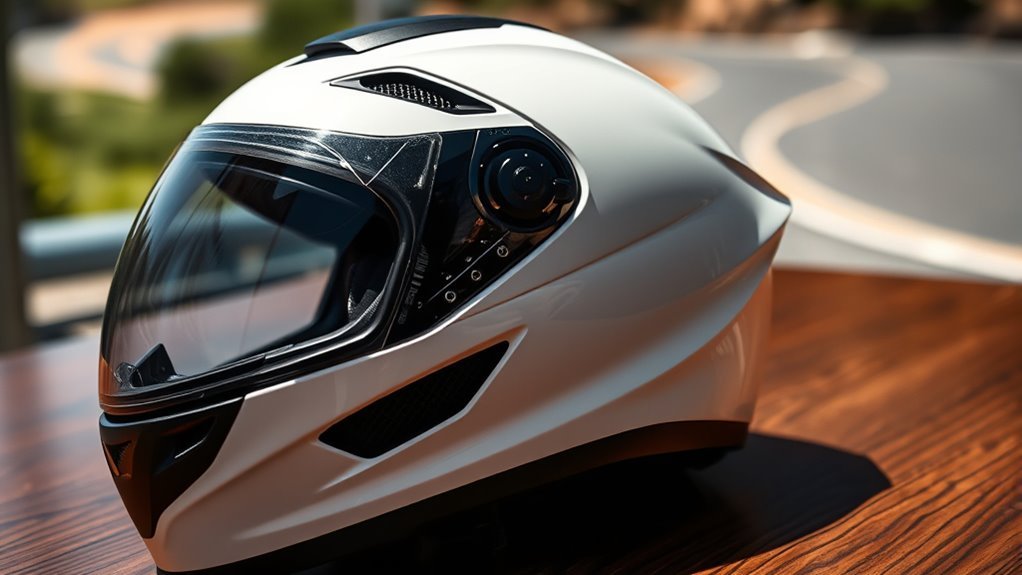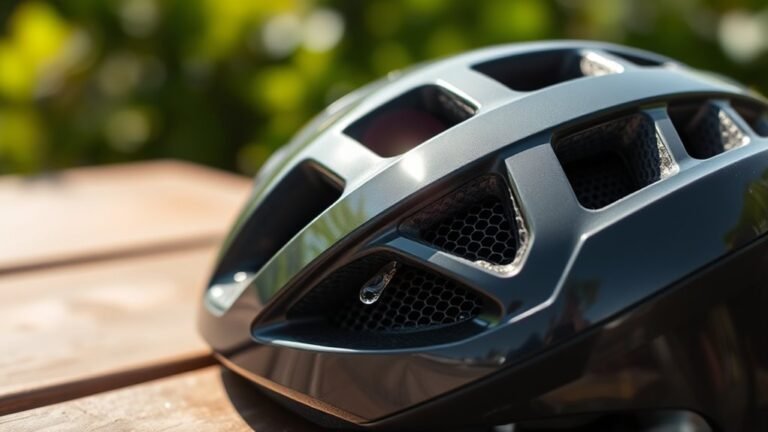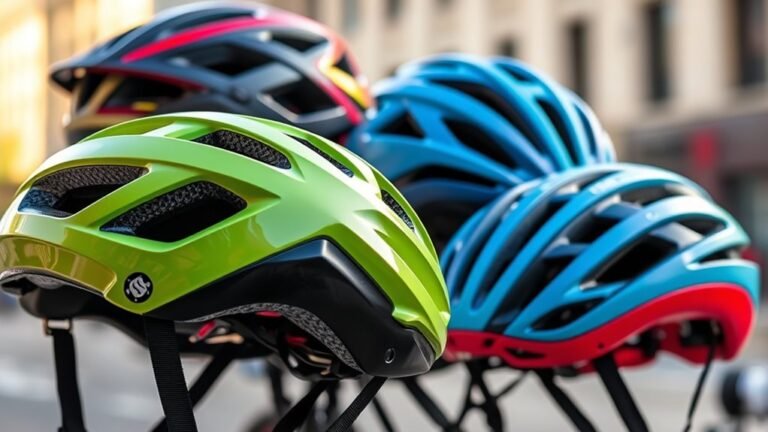Helmet Ventilation Systems: Staying Cool on Rides
Helmet ventilation systems are essential for keeping you cool on rides. They regulate temperature and reduce moisture buildup, enhancing comfort. Open vents maximize airflow in warm conditions, while adjustable vents allow for customization based on your needs. Effective ventilation not only prevents overheating but also maintains helmet stability at high speeds. When choosing a helmet, consider fit and airflow dynamics to guarantee peak performance. Discover more about specific designs and maintenance tips for your helmet’s longevity.
Understanding Helmet Ventilation Systems
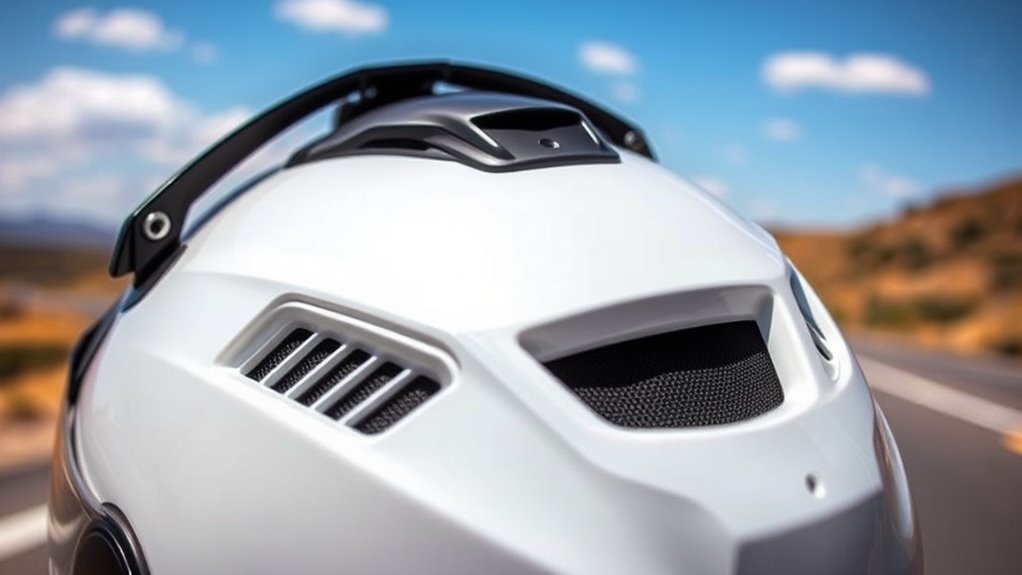
When you wear a helmet, understanding its ventilation system can greatly impact your comfort and performance. The effectiveness of your helmet’s airflow dynamics determines how well it manages heat and moisture. A well-ventilated helmet allows for ideal thermal comfort by promoting a flow of air that cools your head while riding. Key components include strategically placed vents that facilitate airflow, reducing humidity buildup and maintaining a comfortable temperature. When you’re cruising on your bike, maintaining a balance between airflow and insulation is vital to prevent overheating. It’s important to take into account how different designs influence airflow patterns, enhancing your riding experience. By grasping these principles, you can make sure your helmet supports your freedom on the road without compromising comfort.
Types of Helmet Ventilation Designs
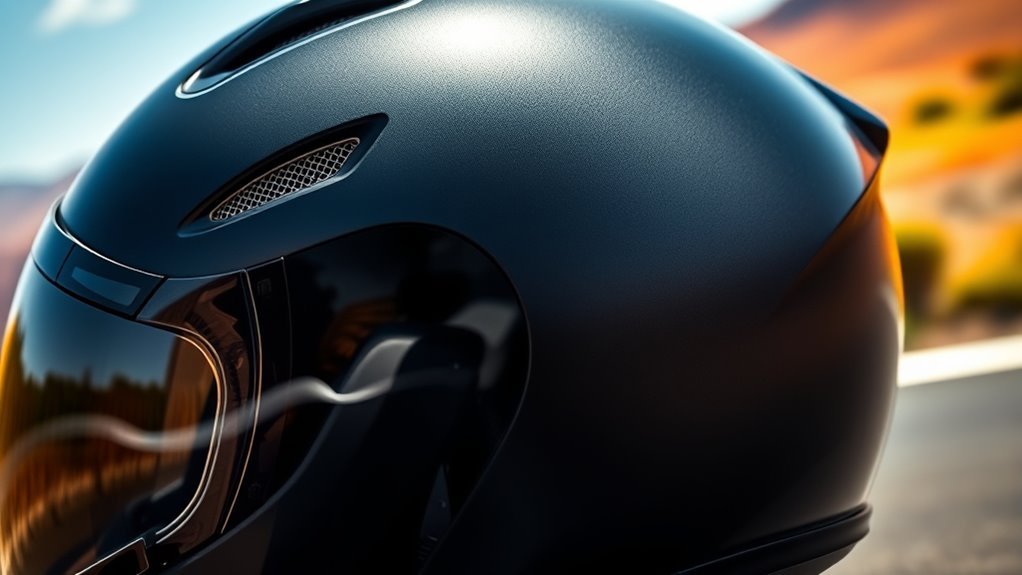
Different helmet ventilation designs cater to various riding conditions and preferences, influencing airflow efficiency. Understanding these designs can enhance your riding experience.
| Design Type | Description |
|---|---|
| Open Vents | Allow maximum air intake, ideal for warm weather. |
| Air Channels | Direct airflow along the interior, reducing turbulence. |
| Adjustable Vents | Offer flexibility for varying conditions, enabling customization. |
| Aerodynamic Vents | Minimize drag while optimizing airflow, perfect for speed enthusiasts. |
| Multi-vent Systems | Combine various designs for versatile performance across conditions. |
Choosing the right helmet ventilation design can greatly impact comfort. Whether you opt for open vents or intricate air channels, understanding each type guarantees you stay cool and focused on the ride ahead.
Benefits of Effective Ventilation
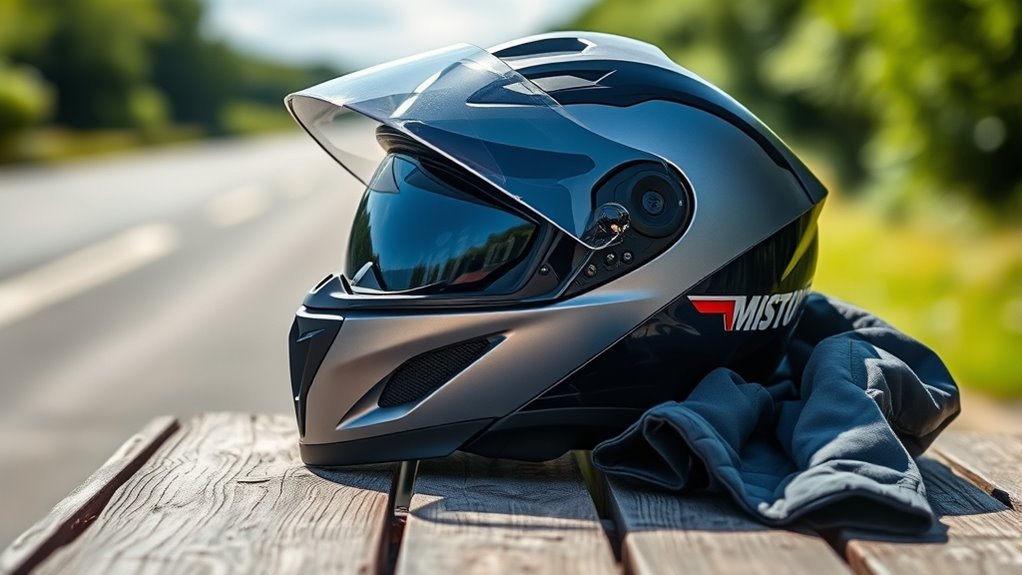
Effective ventilation in helmets considerably enhances your overall riding experience, as it helps regulate temperature and reduces moisture buildup. By incorporating advanced cooling technology, these systems utilize airflow dynamics to promote a steady flow of air, keeping your head cool during extended rides. This airflow not only prevents overheating but also minimizes sweat accumulation, allowing you to focus on the road ahead rather than discomfort. Additionally, effective ventilation can enhance helmet stability, reducing lift at high speeds. When you ride with a well-ventilated helmet, you can enjoy longer journeys without the annoyance of heat fatigue. Ultimately, embracing these benefits means you can push your limits while feeling comfortable, confident, and free on every adventure.
Factors to Consider When Choosing a Helmet
What should you prioritize when selecting a helmet? First and foremost, verify a proper helmet fit. A well-fitted helmet not only enhances comfort but also optimizes safety. Next, consider the airflow dynamics; effective ventilation is essential for keeping you cool during long rides. Look for helmets with strategically placed vents that promote airflow without compromising structural integrity. Additionally, weigh the helmet’s weight and materials; lighter options can improve your riding experience without sacrificing protection. Finally, evaluate the helmet’s certification standards to guarantee it meets safety regulations. Balancing these factors will help you find a helmet that allows you the freedom to ride confidently while staying comfortable and protected on every adventure.
Maintenance Tips for Optimal Ventilation
To guarantee ideal ventilation in your helmet, regular maintenance is essential. Neglecting this aspect can hinder airflow optimization and reduce your comfort during rides. Here are some significant maintenance tips:
Regular maintenance is crucial for optimal helmet ventilation, ensuring comfort and airflow during your rides.
- Filter Cleaning: Regularly remove and clean your helmet’s internal filters to guarantee unobstructed airflow.
- Inspect Vents: Check the ventilation openings for dirt and debris. Clear any blockages to maintain effective cooling.
- Check Padding: Confirm that the internal padding is in good condition. Replace it if it’s worn out to support airflow.
- Storage: Store your helmet in a cool, dry place to prevent warping and guarantee longevity.
Frequently Asked Questions
Can Helmet Ventilation Systems Help Prevent Fogging of Visor or Goggles?
Yes, helmet ventilation systems can greatly aid in fogging prevention. By ensuring a steady airflow, they help maintain a consistent temperature inside your helmet, which reduces humidity that causes fog on your visor or goggles. An effective visor design often incorporates anti-fog coatings, but without proper ventilation, those features may not perform at their best. Ultimately, a well-ventilated helmet enhances your freedom to ride without the distraction of fogging, allowing for clearer visibility.
Do Different Weather Conditions Affect Helmet Ventilation Performance?
Absolutely, different weather conditions can dramatically affect helmet ventilation performance! When humidity’s high, it creates a sweltering sauna effect inside your helmet, making it tough to stay cool. Conversely, dry, cool weather enhances airflow, letting you feel like you’re riding on a breeze. Adjusting your helmet’s vents based on weather impacts can optimize comfort and visibility, ensuring you enjoy that sense of freedom while traversing any conditions out there.
How Do Helmet Materials Impact Ventilation Effectiveness?
Helmet materials greatly impact ventilation effectiveness due to their material composition and ventilation design. Lightweight materials, like polycarbonate, often allow for better airflow, while denser materials can restrict it. A well-designed helmet incorporates air channels in the inner structure, enhancing the cooling effect when you ride. If you choose helmets made from breathable fabrics, you’ll likely experience improved moisture wicking, ensuring you stay comfortable and focused during your ride, regardless of conditions.
Are There Specific Brands Known for Superior Ventilation Systems?
Yes, there are specific brands known for superior ventilation systems. Brands like Giro, Bell, and POC often lead in brand comparisons due to their advanced ventilation technologies. Giro’s Wind Tunnel and Bell’s Velocity Flow are examples of effective designs that promote airflow. These innovations help keep you cool during rides, enhancing your comfort and performance. When choosing a helmet, consider these brands to guarantee ideal ventilation without sacrificing safety or style.
Can I Modify My Helmet for Better Ventilation?
You might feel tempted to tinker with your helmet for improved airflow, but proceed with caution. While ventilation modifications could enhance comfort, they can compromise helmet safety. Any alterations might affect the structural integrity and protective features designed to keep you safe during a ride. It’s best to choose a helmet specifically engineered for ideal ventilation while maintaining safety standards. Always prioritize protection over comfort when it comes to your gear.
